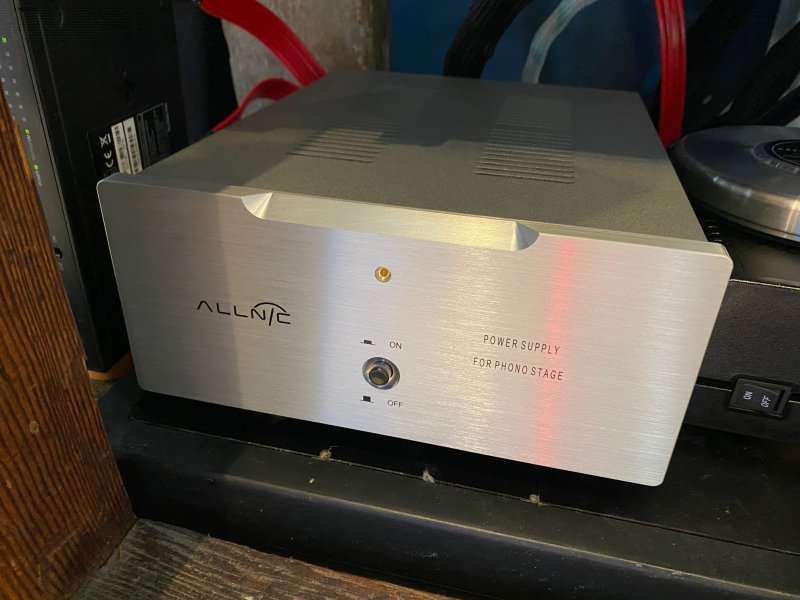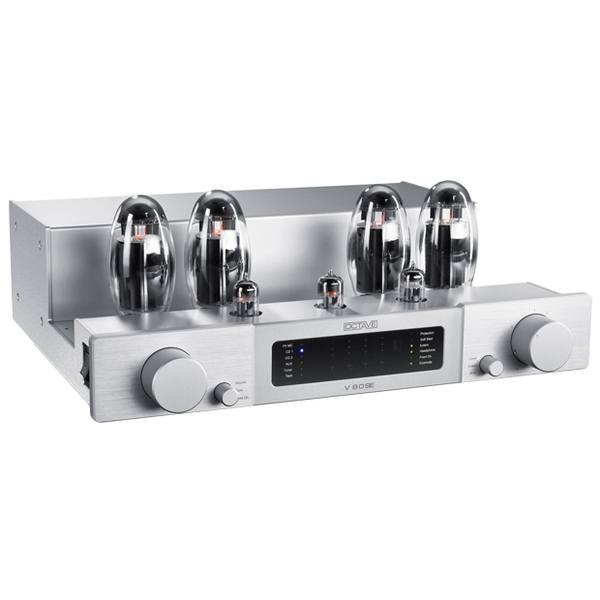Description
INTRODUCING THE H‐6500 PHONO STAGE
(New replacement for the H-1500 two box LCR vacuum tube phono stage)
The H‐6500 is Allnic Audio’s mid‐line phono stage model, just under the top of the line H‐7000. Like all Allnic Audio products, it uses Permalloy (iron and nickel alloy) for its transformer cores. Allnic is grateful to Mr. G.W. Elmen of Western Electric for inventing Permalloy for transformer core use, and in so doing, providing an enormous service to recorded music listeners everywhere.
The H‐6500 has the following features:
LCR TYPE RIAA EQUALIZATION:
RIAA equalization is a specification for the correct playback of vinyl records, established by the Recording Industry Association of America. The purpose of the equalization is to permit longer
playback times and improve sound quality.
RIAA equalization is a form of establishing a flat frequency response for the playback of recorded music. The necessity for this equalization process arises from mechanical difficulties inherent in
record production. In order to prevent the cutting needle from over‐cutting into the next record groove in the bass, as a record is cut, some bass frequencies are attenuated. In the treble region, in
order for high frequency sounds not to be masked by the noise inherent in moving a stylus over and through a modulated vinyl surface, some treble frequencies are boosted. With the application of
the correct filtering techniques on playback, the result is a flat frequency response with better signal to noise ratios. There are four de‐emphasis methods that can be applied at playback:
A. Active filters (Negative feedback types):
Different quantities of negative feedback are applied, with deeper feedback to the high frequencies and shallower to the low frequencies.
The benefits of this method are improved signal to noise ratios, low cost and consistent operation.
Some of the shortfalls are looser bass reproduction and possibly a pinched and compressed high frequency playback due to excess feedback ratios.
B. Passive filters (CR type):
The frequencies are filtered to fit the RIAA specification by varying the amount of attenuation at different frequencies through a complex capacitor‐resistor network. This
technique results in no voltage overload, purer reproduction (because there is no feedback), and more accurate RIAA compensation. However, there are problems because the system provides
no gain, and insertion loss and impedance matching issues arise.
C. Hybrid filters (use of both CR and negative feedback types):
In this method, both types of filters applied separately; an active filter is applied to the low frequencies and a passive filter to the high frequencies. Unfortunately, both the advantages
and disadvantages of each of these two types of filters, already discussed, affect the playback system at the same time.
D. LCR filters, which are used in the H‐ 6500 :
Two pieces of a linear reactor (a kind of choke coil) comprise the main part of these filters, assisted by precise CR filters, in order to lower impedances and insertion loss. In vacuum tube
circuits, active and passive filters usually are operated on one hundred plus kilo ohms of impedance. An LCR RIAA filter’s impedance is a constant 600 ohms.
Furthermore, an LCR RIAA filter’s series resistance is less than 13 ohms (as a comparative, some famous ones are 31 ohms). The lower the impedance, the more dynamic is the sound
reproduction, with better bass response and speed.
But LCR RIAA units have drawbacks as well. These drawbacks are high cost and the difficulty of impedance matching; the latter has been the primary hindrance to the commercialization of
this superb method in the construction of phono stage amplifiers. However, Allnic Audio manufactures a high quality LCR RIAA unit and has developed a 600 ohms impedance matching
method.
• For superior signal to noise ratios, the H‐ 6500 is equipped with pure vacuum tube, high voltage regulation for each channel and a power supply unit separate from the phono
stage itself. High quality MC Step‐up Transformers with Permalloy cores are used for the H‐6500’ s dual MC inputs.
• Pure Class A operation
“Is the Allnic my favorite phono preamplifier that I’ve ever used? That I can say without a wink. With the H-6500 as part of my analog rig, I know that I’m going to have the gorgeous tube sound that I feel is imperative for satisfying vinyl playback, and that everything else in the chain is going to perform the way I want it to–in many cases my expectations are exceeded, thanks to the Allnic.” – Parttimeaudiophile Dec’23
Specifications
Inputs: Moving Coil (MC) × two (2) pairs unbalanced (RCA)
Moving Magnet (MM) x two (2) pairs unbalanced (RCA)
Ground: Two (2) x screw type terminal
Outputs: One (1) pair x unbalanced (RCA)
Input Impedance: MC up to 117Ω, MM 47kΩ
Frequency (RIAA): 20Hz ~ 20KHz (±0.3db)
Voltage Gain: +40db (1KHz) MM, +66db (1Khz) MC
Maximum Input voltage (MM, non‐clipping): 20Hz / 30mV, 100Hz / 100mV, 1KHz / 240mV, 10KHz /280mV
THD (Total Harmonic Distortion): Less than 0.17% (1KHz, Output 1V)
Output Impedance: 430Ω (On‐off method)
S/N Ratio: ‐86db (CCIR, 1KHz)
Tubes: 5842 x 8 , signal gain (similar to WE 417A), 7233 x 2, series voltage regulator (similar to CV4079), 5654 x 2, automatic voltage regulator (similar to 6AH6, 6AH6WA, 6AH6S).
5AR4 x 1, rectifier ‐ in the power supply (same as GZ34).
Power Consumption: 70W 110/ 220 / 60Hz
Fuse: AC 2A, 250V
Dimensions (W x D x H): Phono Stage: 430mm x 335 mm x 70 mm, Power supply: 170mm x
275mm x 118mm
Weight: Phono Stage: 8 Kg unpacked, Power supply: 8.1 Kg unpacked
Warranty: 12mths including factory fitted NOS Tubes









